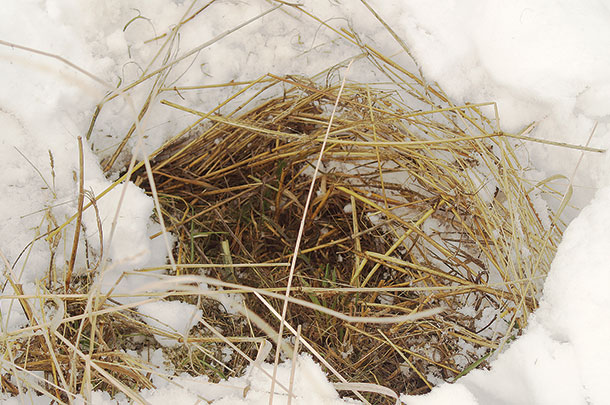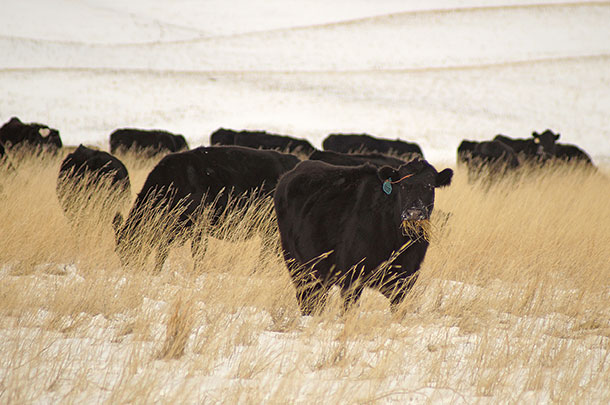According to Kevin Jensen, a research geneticist with the USDA-ARS Forage and Range Research laboratory in Logan, Utah, selecting a forage species is the first step to successful pasture management and is one of the most frequently asked questions at the lab. However, as most producers know, the key to selecting a species is not only in the environment but in what makes sense in the business’s goals.
“You talk to a lot of different people, and a lot of different people have a lot of different philosophies,” Jensen says. “You see a lot of different seed mixes, and in some cases, they make no sense at all. Commonly, these seed mixes include species that are not well adapted to the environment or a management practice.”
As an example, Jensen describes a popular irrigated pasture mix that contains Kirk crested wheatgrass. In awe, he says, “Don’t get me wrong, I love crested wheatgrass, but why in the world is crested wheatgrass on an irrigated plan?” He goes on to describe a dryland mix that contained orchardgrass, a palatable species that requires more than 18 inches of precipitation or additional irrigation.
“It’s critical to understand the adaptations and management limitation of the grasses in your seed mixes. I get several calls wanting to know what species to grow,” Jensen says. “It’s critical that if you know you’re going to have open winters and it’s going to be cold, why would you plant orchardgrass?"
"Even though you like it and you think it’s a great grass, why are you going to plant it? What’s your intended use? Is it going to be well managed? That makes all the difference in the type of species to be recommended or that I’ll look at. As long as you have the moisture, you can count on a lot of different options.”
As an example, here are a few of the things producers need to ask themselves before settling on a pasture species:
- What species will accommodate my grazing goals?
- What type of animals am I grazing?
- What grass species will fit my management style?
- What species have regrowth characteristics that will meet my objectives?
- What varieties will provide good yields, quality and disease resistance?
- What soil type am I working with?
- What are my summer and winter temperatures?
- How much water does my land receive and when?
- What is my intended use?
An unpredicted species
To bring the point home, Jensen gives an example of a study he and his colleagues conducted for a Montana ranching family looking to match their cow herd’s production cycle and nutritional demands with the natural grass cycle. By doing so, the Hibbard family figured they could ultimately cut production and labor costs exponentially.
So, in the spring of 2013, 11 test plots were set up on 33 acres of the Hibbards’ dryland pastures. Monocultures and mixtures of meadow brome, intermediate wheat grass, tall fescue, crested wheatgrass, orchardgrass, sanfoin and small burnet were seeded in hopes that one or a combination of these species would improve native range and provide an alternative to harvesting hay for winter feed.
After leaving the test plots idle for one year, 1,009 cows were moved into the 33 acres to mob-graze the pasture the end of February. Jensen says it was interesting to find that a mix of Cache meadow bromegrass and Rush intermediate wheatgrass achieved the best results in terms of yield and palatability.

Historically, the Hibbard family had improved their native rangelands by planting a mixture of orchardgrass and alfalfa, both susceptible to cold temperature injury. Spring freezing temperatures are frequently observed on the ranch, resulting in reduced stockpiled forage for fall and winter grazing.
Jensen says dry matter yields during the winter of 2015 ranged from 1.9 (meadow bromegrass/tall fescue mix) to 2.6 (meadow bromegrass/intermediate wheatgrass/alfalfa mix) tons per acre.
The meadow bromegrass/intermediate wheatgrass mix represented an 87 percent increase over that observed in the native rangeland. Based on a cow consuming 30 pounds per day, slightly more than 60,000 pounds of forage was harvested from the 33 acres.
Change can be hard
Cooper Hibbard, foreman at Sieben Livestock Co., says that through this study they were able to get on the right path in terms of species selection. He says they had experimented with some meadow bromes, but they had never heard of Cache meadow brome until this study. Tall fescue was also something they had considered but didn’t think that it would work in their environment. “It has brought a lot of clarity to us on our ranch,” Hibbard says.
“Change can be hard. We are a very traditional culture, and we are comfortable with what we know and what has worked for us. For lots of people, that’s fine; that works for them and they aren’t looking for any other answers."
"We were looking for other answers, and even with that we needed a little incentive. It’s pretty easy to get caught up in the thought process and to stay with what you already know and are comfortable with,” Hibbard says.
Hibbard recommends that producers start small when experimenting with pasture species. He says every time a producer plants something different, he or she is taking a risk. It is important producers select plant species on the basis of site conditions and what the species can contribute to their objectives.
A word of caution
In addition to those who are hesitant to try something new, Ray Smith, a forage extension specialist at the University of Kentucky, points out there is also a group of producers – innovators – who are very interested and willing to try new things.
Smith says, “A lot of people go with what they’re used to, what their father did or what their neighbors are doing, but there is also an innovative group. That is a really good group in one way, but sometimes people want to try something new because they just read about it in the latest farm magazine, and it may not be very well adapted to their conditions."
"So on the one hand choose the species that is best adapted to your conditions, but don’t be too quick to try something that you don’t have experience with yourself or that’s not grown in your local area.”
Smith, as well as Jensen, encourages producers to talk with their local extension agents or even a producer in the area who has grown the species before making any final decisions. They also encourage producers to do their homework before seeking outside resources. FG
PHOTO 1: After leaving the field idle for one year, 1,009 cows were moved into the 33 acres to mob-graze the pasture at the end of February. It was interesting to find that a mix of Cache meadow bromegrass and Rush intermediate wheat grass yielded the best results.
PHOTO 2: When the cows were moved into the field, there were about 8 inches of snow.
PHOTO 3: “What we got from watching our cows graze these test plots was really lucrative. It gave us a lot of guidance to what species we need to be planting,” Hibbard says. Photos provided by Kevin Jensen.











